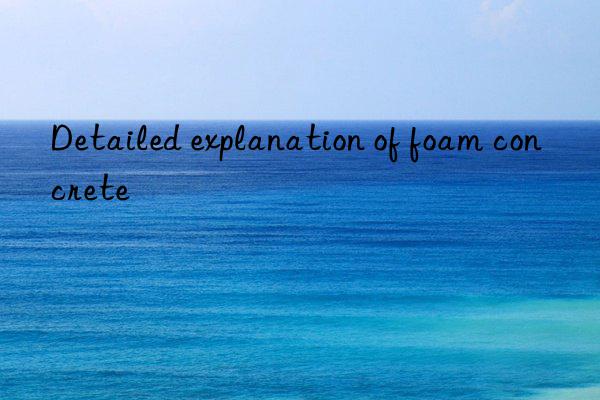
Foam concrete, also known as foamed cement, lightweight concrete, etc., is a new energy-saving building material that is waste-free, environmentally friendly, energy-saving, low-cost, and non-combustible. Foamed concrete is a concrete that contains a large number of small closed pores and has considerable strength by introducing air or nitrogen, carbon dioxide, oxygen and other gases into the concrete slurry according to the application needs through chemical or physical methods. Concrete products.
The production of traditional foam concrete is usually prepared a foam a water solution into foam with a mechanical method, and then the foam is added to the slurry composed of silicon -containing materials, calcium materials, water and various exterior agents. A porous material made by mixing, casting and curing. The dry density of this lightweight concrete is usually 150-1500kg/m3, and it has good thermal insulation and energy-saving properties [1]. The use of foamed concrete can generally reduce the weight of a building by 25%, and some can reach 30% to 40%. Therefore, foaming is used in building structures such as internal and external walls, roofs, floors, columns, and wall core filling. Concrete has significant economic benefits</p

 微信扫一扫打赏
微信扫一扫打赏

